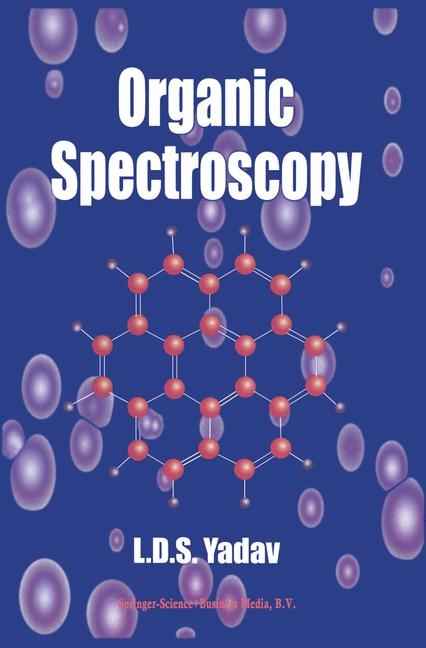
Organic Spectroscopy
Seiten
2005
|
1st ed. 2005
Springer (Verlag)
978-94-017-2508-8 (ISBN)
Springer (Verlag)
978-94-017-2508-8 (ISBN)
- Titel wird leider nicht erscheinen
- Artikel merken
Organic Spectroscopy presents the derivation of structural information from UV, IR, Raman, 1H NMR, 13C NMR, Mass and ESR spectral data in such a way that stimulates interest of students and researchers alike. The application of spectroscopy for structure determination and analysis has seen phenomenal growth and is now an integral part of Organic Chemistry courses.
This book provides:
-A logical, comprehensive, lucid and accurate presentation, thus making it easy to understand even through self-study;
-Theoretical aspects of spectral techniques necessary for the interpretation of spectra;
-Salient features of instrumentation involved in spectroscopic methods;
-Useful spectral data in the form of tables, charts and figures;
-Examples of spectra to familiarize the reader;
-Many varied problems to help build competence ad confidence;
-A separate chapter on `spectroscopic solutions of structural problems' to emphasize the utility of spectroscopy.
Organic Spectroscopy is an invaluable reference for the interpretation of various spectra. It can be used as a basic text for undergraduate and postgraduate students of spectroscopy as well as a practical resource by research chemists. The book will be of interest to chemists and analysts in academia and industry, especially those engaged in the synthesis and analysis of organic compounds including drugs, drug intermediates, agrochemicals, polymers and dyes.
This book provides:
-A logical, comprehensive, lucid and accurate presentation, thus making it easy to understand even through self-study;
-Theoretical aspects of spectral techniques necessary for the interpretation of spectra;
-Salient features of instrumentation involved in spectroscopic methods;
-Useful spectral data in the form of tables, charts and figures;
-Examples of spectra to familiarize the reader;
-Many varied problems to help build competence ad confidence;
-A separate chapter on `spectroscopic solutions of structural problems' to emphasize the utility of spectroscopy.
Organic Spectroscopy is an invaluable reference for the interpretation of various spectra. It can be used as a basic text for undergraduate and postgraduate students of spectroscopy as well as a practical resource by research chemists. The book will be of interest to chemists and analysts in academia and industry, especially those engaged in the synthesis and analysis of organic compounds including drugs, drug intermediates, agrochemicals, polymers and dyes.
L.D.S. Yadav is currently Professor in the Department of Chemistry, University of Allahabad, India.
1. Introduction to Spectroscopy (Spectrometry).- 2. Ultraviolet (UV) and Visible Spectroscopy.- 3. Infrared (IR) Spectroscopy.- 4. Raman Spectroscopy.- 5. Proton Nuclear Magnetic Resonance (PMR or 1H NMR) Spectroscopy.- 6. 13C NMR Spectroscopy.- 7. Electron Spin Resonance (ESR) Spectroscopy.- 8. Mass Spectroscopy (MS).- 9. Spectroscopic Solutions of Structural Problems.- Answers to Problems.
| Erscheinungsdatum | 19.12.2018 |
|---|---|
| Zusatzinfo | X, 324 p. |
| Verlagsort | Dordrecht |
| Sprache | englisch |
| Maße | 155 x 235 mm |
| Themenwelt | Naturwissenschaften ► Chemie ► Analytische Chemie |
| Naturwissenschaften ► Chemie ► Organische Chemie | |
| Schlagworte | ESR • Nuclear Magnetic Resonance (NMR) • Organic Chemistry • spectroscopy • UV |
| ISBN-10 | 94-017-2508-X / 940172508X |
| ISBN-13 | 978-94-017-2508-8 / 9789401725088 |
| Zustand | Neuware |
| Haben Sie eine Frage zum Produkt? |
Mehr entdecken
aus dem Bereich
aus dem Bereich


